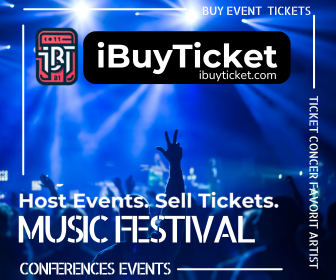Every Major Business Model: What Worked, What Didn’t, and What I Learned

When I look back on my journey as an entrepreneur, it feels like I’ve walked through every possible business model you can imagine. Some of them were complete disasters, others brought steady but modest returns, and a few finally gave me the freedom and stability I was searching for.
This is the story of how I went from chasing quick wins in dead-end schemes to building business models that actually work. I share it because maybe, just maybe, someone else can skip a few of the painful lessons I had to learn the hard way.
The Early Days: My Foray Into the Wrong Kinds of Businesses
My first attempt at “running a business” wasn’t really a business at all—it was multi-level marketing. A close friend convinced me it was the path to financial freedom. “All you need to do is bring in three people, who bring in three people, and soon you’ll be earning six figures from home,” they said.
In reality, I ended up with boxes of overpriced supplements, awkward conversations with friends I tried to recruit, and a sinking realization that the only people making money were the ones at the very top. It stung, but it was a valuable lesson: if success depends more on recruitment than real value, you’re in trouble.
From there, I moved on to dropshipping. I set up a Shopify store, filled it with random trending gadgets, and threw money into Facebook ads. I thought it was my ticket to easy online income. Instead, it drained my savings faster than I care to admit. Poor margins, customer complaints, delayed shipping—it was a nightmare.
Lesson from these failures?
Not every “opportunity” is really a business. Some models are just traps designed to exploit impatience and inexperience.
The Middle Ground: Stable, But Stagnant
After those early blunders, I shifted to something more straightforward: freelancing. I started offering graphic design services to small businesses. The first time I got paid to design a logo, it felt incredible. I was using my skills, helping people, and making money at the same time.
But freelancing quickly revealed its limits. I was trading hours for dollars, and the moment I stopped working, the income dried up. It was exhausting to constantly chase clients, deliver projects, and manage revisions.
To escape the feast-or-famine cycle, I tried starting a small agency. I hired a couple of assistants and began offering social media management to local businesses. It worked better than freelancing, and I enjoyed having a small team. But soon, I hit another wall: growth was limited by how much time and manpower we had. Scaling meant hiring more people, managing more stress, and putting out more fires.
The lesson here?
These models can be a great starting point. They teach you about discipline, service, and customer management. But they’re tough to scale and often lead to burnout if you’re not careful.
The First Taste of Scalability
At some point, I began asking myself a different question: What can I build once that will keep earning for me again and again?
That question led me to digital products. My first real success was an online course teaching small business owners how to design simple graphics for their social media. Recording the videos was nerve-wracking, and the first version of my sales page looked amateurish. But to my surprise, people bought it.
For the first time, I experienced what leverage feels like. I created the course once, and it kept generating income even when I wasn’t actively working on it. It wasn’t life-changing money yet, but it showed me the power of scalability.
Around the same time, I experimented with affiliate marketing. I started writing blog posts reviewing tools I was already using and added affiliate links. Some days the commissions were small—$20 here, $50 there—but the idea of earning money while I slept was mind-blowing.
These models opened my eyes. They proved that with the right approach, I could separate my time from my income.
Finally Finding What Works
The real breakthroughs came when I discovered the magic of subscriptions and platform-style businesses.
I launched a membership site for small business owners. Members paid a small monthly fee to access resources, templates, and group coaching calls. I was terrified people would sign up and cancel after one month, but to my surprise, many stayed. As the community grew, so did the predictability of my income. For the first time, I wasn’t waking up each month wondering how I’d make ends meet.
Later, I worked on building a marketplace platform connecting freelancers with small businesses. It was tough to get off the ground, but once we hit critical mass, the growth became self-sustaining. The beauty of marketplaces is that they create network effects: more sellers attract more buyers, and more buyers attract more sellers.
Lesson from this stage?
If you want lasting stability and serious growth, you need to build systems with recurring revenue or network effects. They’re hard at the start, but they pay off for years.
What I Learned Along the Way
Looking back, I see my journey as a staircase. Each step had its own purpose, even if it wasn’t profitable at the time.
- The dead-end businesses taught me to avoid hype and focus on delivering real value.
- Freelancing and small agencies taught me discipline, client management, and the importance of systems.
- Digital products and affiliate marketing taught me the power of leverage and scalability.
- Subscriptions and platforms taught me how to build long-term, sustainable income.
If I could go back, I’d tell myself: Stop chasing shortcuts. Build something real. Focus on models that can grow without chaining every dollar to your time.
Final Thoughts
Entrepreneurship isn’t about finding the perfect business model on day one. It’s about learning, testing, failing, and climbing your way up through the different stages. Every failure brings a lesson, and every small win gets you closer to what actually works.
Today, I’m grateful for all the wrong turns because without them, I wouldn’t have discovered the beauty of recurring revenue or the power of scalable platforms.
If you’re in the messy middle of your own journey, my advice is simple: keep going. Experiment. Learn. Adjust. The models that last aren’t always the flashiest—they’re the ones that deliver consistent value, grow sustainably, and give you the freedom you’ve been looking for all along.
The post Every Major Business Model: What Worked, What Didn’t, and What I Learned appeared first on Business Ideas - NegosyoIdeas.











